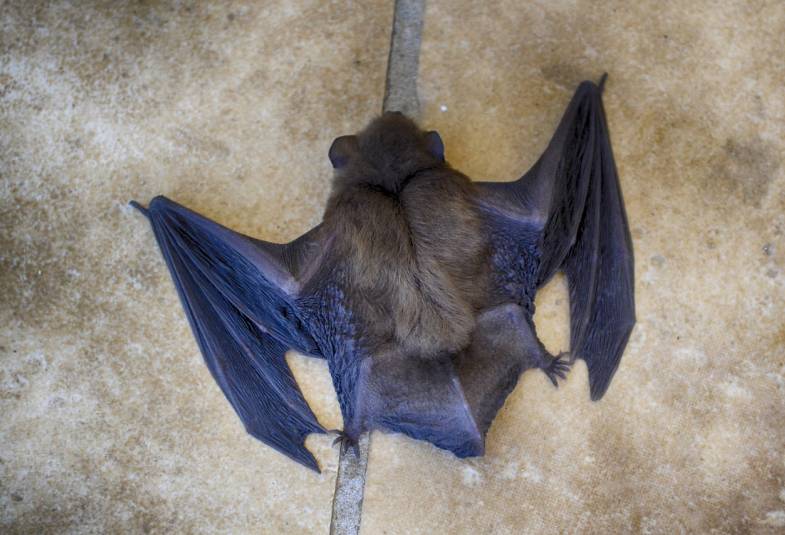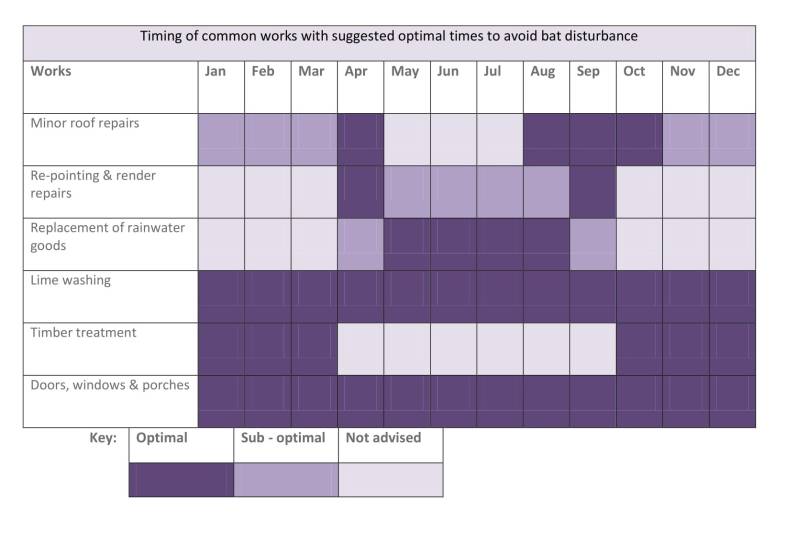Bats are a vital part of our native wildlife and part of God’s creation. However, in large numbers, and in the wrong places, they can sometimes restrict our mission and worship.
We can help you plan your building works, and the daily use of your church building, around bats.
We are currently partnering with Natural England, Historic England, the Churches Conservation Trust and the Bat Conservation Trust on a five year Bats in Churches project to develop new ways of managing bats so that they can live happily in ways that don’t damage our historic churches or inconvenience the people who want to use them.
Churches looking for advice on their bat population, can contact the free Bat Conservation Trust helpline on 0345 1300 228.
Further guidance for property owners and all involved in managing, maintaining or making changes to buildings, or using the buildings is provided through Historic England's Building Works and Bats guidance.
Download our guidance
- Bats in churches: Undertaking work (416.29 KB)

Bats in Churches Project
The newly launched Bats in Churches project is bringing together the knowledge of engagement, heritage and volunteer training experts, as well as bat and conservation specialists, to find locally appropriate and sustainable solutions to help churches and their communities to thrive alongside the bats. The five-year project has been made possible by a £3.8 million grant from the National Lottery Heritage Fund and is working with 102 of the worst affected churches across the country.
Each church provides a unique set of challenges and the project will be using Natural England’s specially created Bats in Churches Class Licence to come up with range of novel approaches for managing bats in churches.
The project is also running a countrywide citizen science project, you can find out more below:
Legal protection
Bats are protected by UK law. It is illegal to disturb them or damage or destroy their resting sites (roosts).
If you are doing work to your church that might affect bats, you may need a licence from Natural England.
A licence is free. But the survey and submission work can be expensive. So it is wise to take them into account from the very beginning to minimise cost and disruption.
Planning work if your church has bats
If you are planning works to your church building, then you may need to get a bat survey.
Time your work to avoid disturbing bats

This timetable gives you a general idea of the best times of year to do minor works if your church has bats.
It avoids the sensitive maternity and hibernation periods. However there is often flexibility depending on how the bats are using your building.
When putting together a schedule for your project, remember to also factor in:
- Getting your faculty
- The contractor’s availabilities
- The weather
- Funding
Major projects inevitably last many months. So if the work is likely to go beyond the window of opportunity, then you will need professional advice.
Licences and surveys
Natural England will take a maximum of 30 working days to make a decision on your licence application.
They may ask you for several surveys, which are generally done during the summer when bats are active. Don’t forget to factor that into your work plan as early as possible.
Get several quotes from professional ecologists. And discuss with them how you might reduce the costs. Make sure you can contact them for further advice if unexpected risks appear while building work is ongoing.
Appoint your ecologist before applying for any grants. They can give you an idea of the costs for you to include in your application.
Your architect or surveyor can advise you on the next steps.
Why are bats in churches?
Bats have adapted to using church buildings because their natural roosting sites in old trees, barns and caves have been lost.
They have very specific requirements for their roosts depending on species:
- Maternity colonies select warmer sites, which is why they are often in the south aisle
- Some species choose cracks and crevices
- Others are free hanging and need space for taking off
Medieval churches are popular because they are lasting features in a changing landscape. And their churchyards offer rich habitat for wildlife, including the insects that bats eat.
How do bats use churches?
At least eight of the seventeen species of bats breeding in Britain use churches to some extent.
They can be found all year round. And in most buildings, their numbers are small. So you may not even know they are there.
In older churches, bats use gaps in stonework, roofs or over doors to get inside. They roost inside cracks and crevices. They hibernate in the colder parts of the building (e.g. tower, crypt, underground boiler rooms).
In the summer months, roof and eave voids can house maternity colonies of several hundred bats.
Want more help?
Making changes to your building
Let us take you through all the steps of a building project